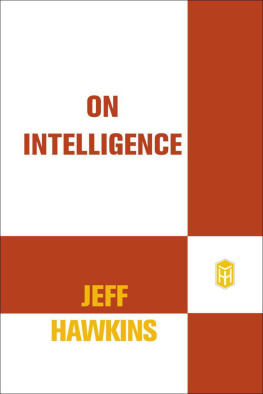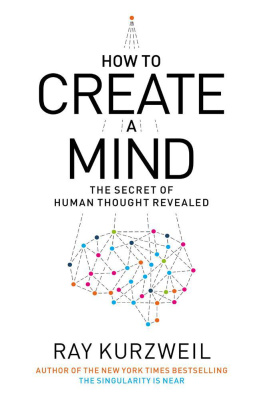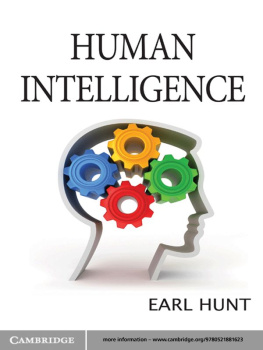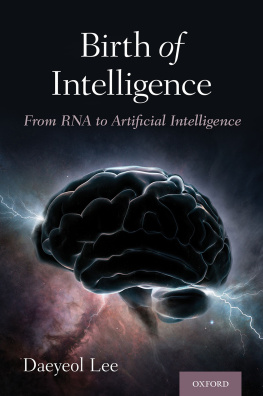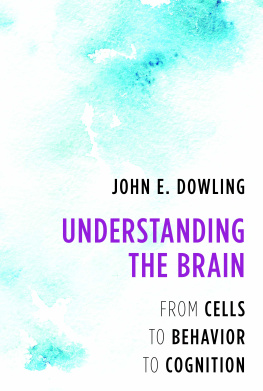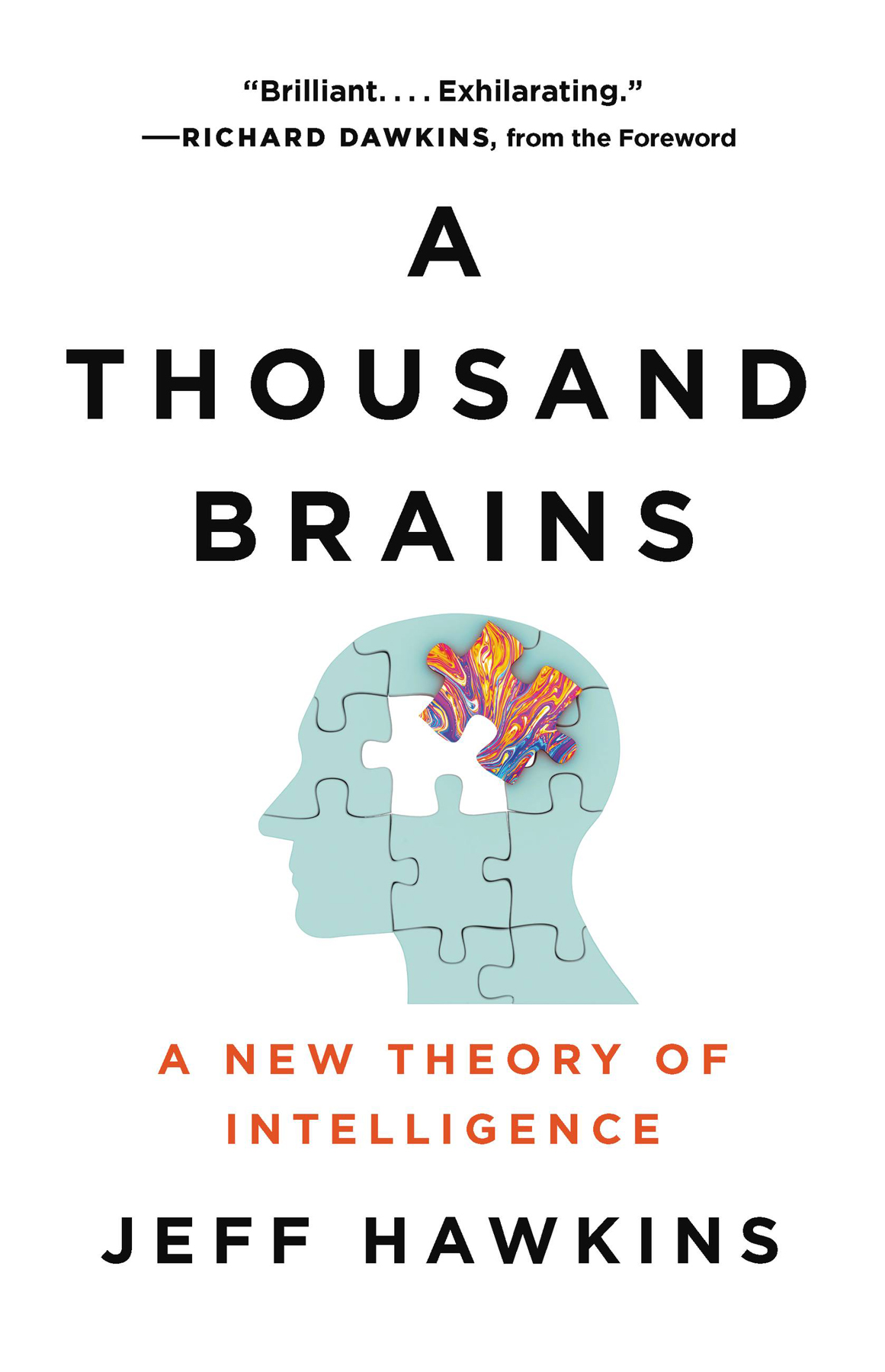
Copyright 2021 by Jeffrey C. Hawkins
Foreword copyright 2021 by Richard Dawkins
Cover images Alexsl / E+ via Getty Images; Dmitri Gomon / Shutterstock.com
Cover copyright 2021 Hachette Book Group, Inc.
Hachette Book Group supports the right to free expression and the value of copyright. The purpose of copyright is to encourage writers and artists to produce the creative works that enrich our culture.
The scanning, uploading, and distribution of this book without permission is a theft of the authors intellectual property. If you would like permission to use material from the book (other than for review purposes), please contact permissions@hbgusa.com. Thank you for your support of the authors rights.
Basic Books
Hachette Book Group
1290 Avenue of the Americas, New York, NY 10104
www.basicbooks.com
First Edition: March 2021
Published by Basic Books, an imprint of Perseus Books, LLC, a subsidiary of Hachette Book Group, Inc. The Basic Books name and logo is a trademark of the Hachette Book Group.
The Hachette Speakers Bureau provides a wide range of authors for speaking events. To find out more, go to www.hachettespeakersbureau.com or call (866) 376-6591.
The publisher is not responsible for websites (or their content) that are not owned by the publisher.
Library of Congress Cataloging-in-Publication Data
Names: Hawkins, Jeff, 1957 author.
Title: A thousand brains : a new theory of intelligence / Jeff Hawkins ; with a foreword by Richard Dawkins.
Description: First edition. | New York : Basic Books, 2021. | Includes bibliographical references and index.
Identifiers: LCCN 2020038829 | ISBN 9781541675810 (hardcover) | ISBN 9781541675803 (ebook)
Subjects: LCSH: Brain. | Intellect. | Artificial intelligence.
Classification: LCC QP376 .H2944 2021 | DDC 612.8/2dc23
LC record available at https://lccn.loc.gov/2020038829
ISBNs: 978-1-5416-7581-0 (hardcover), 978-1-5416-7580-3 (ebook)
E3-20210108-JV-NF-ORI
D ont read this book at bedtime. Not that its frightening. It wont give you nightmares. But it is so exhilarating, so stimulating, itll turn your mind into a whirling maelstrom of excitingly provocative ideasyoull want to rush out and tell someone rather than go to sleep. It is a victim of this maelstrom who writes the foreword, and I expect itll show.
Charles Darwin was unusual among scientists in having the means to work outside universities and without government research grants. Jeff Hawkins might not relish being called the Silicon Valley equivalent of a gentleman scientist butwell, you get the parallel. Darwins powerful idea was too revolutionary to catch on when expressed as a brief article, and the Darwin-Wallace joint papers of 1858 were all but ignored. As Darwin himself said, the idea needed to be expressed at book length. Sure enough, it was his great book that shook Victorian foundations, a year later. Book-length treatment, too, is needed for Jeff Hawkinss Thousand Brains Theory. And for his notion of reference framesThe very act of thinking is a form of movementbulls-eye! These two ideas are each profound enough to fill a book. But thats not all.
T. H. Huxley famously said, on closing On the Origin of Species, How extremely stupid of me not to have thought of that. Im not suggesting that brain scientists will necessarily say the same when they close this book. It is a book of many exciting ideas, rather than one huge idea like Darwins.
I suspect that not just T. H. Huxley but his three brilliant grandsons would have loved it: Andrew because he discovered how the nerve impulse works (Hodgkin and Huxley are the Watson and Crick of the nervous system); Aldous because of his visionary and poetic voyages to the minds furthest reaches; and Julian because he wrote this poem, extolling the brains capacity to construct a model of reality, a microcosm of the universe:
The world of things entered your infant mind
To populate that crystal cabinet.
Within its walls the strangest partners met,
And things turned thoughts did propagate their kind.
For, once within, corporeal fact could find
A spirit. Fact and you in mutual debt
Built there your little microcosmwhich yet
Had hugest tasks to its small self assigned.
Dead men can live there, and converse with stars:
Equator speaks with pole, and night with day;
Spirit dissolves the worlds material bars
A million isolations burn away.
The Universe can live and work and plan,
At last made God within the mind of man.
The brain sits in darkness, apprehending the outside world only through a hailstorm of Andrew Huxleys nerve impulses. A nerve impulse from the eye is no different from one from the ear or the big toe. Its where they end up in the brain that sorts them out. Jeff Hawkins is not the first scientist or philosopher to suggest that the reality we perceive is a constructed reality, a model, updated and informed by bulletins streaming in from the senses. But Hawkins is, I think, the first to give eloquent space to the idea that there is not one such model but thousands, one in each of the many neatly stacked columns that constitute the brains cortex. There are about 150,000 of these columns and they are the stars of the first section of the book, along with what he calls frames of reference. Hawkinss thesis about both of these is provocative, and itll be interesting to see how it is received by other brain scientists: well, I suspect. Not the least fascinating of his ideas here is that the cortical columns, in their world-modeling activities, work semi-autonomously. What we perceive is a kind of democratic consensus from among them.
Democracy in the brain? Consensus, and even dispute? What an amazing idea. It is a major theme of the book. We human mammals are the victims of a recurrent dispute: a tussle between the old reptilian brain, which unconsciously runs the survival machine, and the mammalian neocortex sitting in a kind of drivers seat atop it. This new mammalian brainthe cerebral cortexthinks. It is the seat of consciousness. It is aware of past, present, and future, and it sends instructions to the old brain, which executes them.
The old brain, schooled by natural selection over millions of years when sugar was scarce and valuable for survival, says, Cake. Want cake. Mmmm cake. Gimme. The new brain, schooled by books and doctors over mere tens of years when sugar was over-plentiful, says, No, no. Not cake. Mustnt. Please dont eat that cake. Old brain says, Pain, pain, horrible pain, stop the pain immediately. New brain says, No, no, bear the torture, dont betray your country by surrendering to it. Loyalty to country and comrades comes before even your own life.
The conflict between the old reptilian and the new mammalian brain furnishes the answer to such riddles as Why does pain have to be so damn painful? What, after all, is pain for? Pain is a proxy for death. It is a warning to the brain, Dont do that again: dont tease a snake, pick up a hot ember, jump from a great height. This time it only hurt; next time it might kill you. But now a designing engineer might say what we need here is the equivalent of a painless flag in the brain. When the flag shoots up, dont repeat whatever you just did. But instead of the engineers easy and painless flag, what we actually get is painoften excruciating, unbearable pain. Why? Whats wrong with the sensible flag?
The answer probably lies in the disputatious nature of the brains decision-making processes: the tussle between old brain and new brain. It being too easy for the new brain to overrule the vote of the old brain, the painless flag system wouldnt work. Neither would torture.


